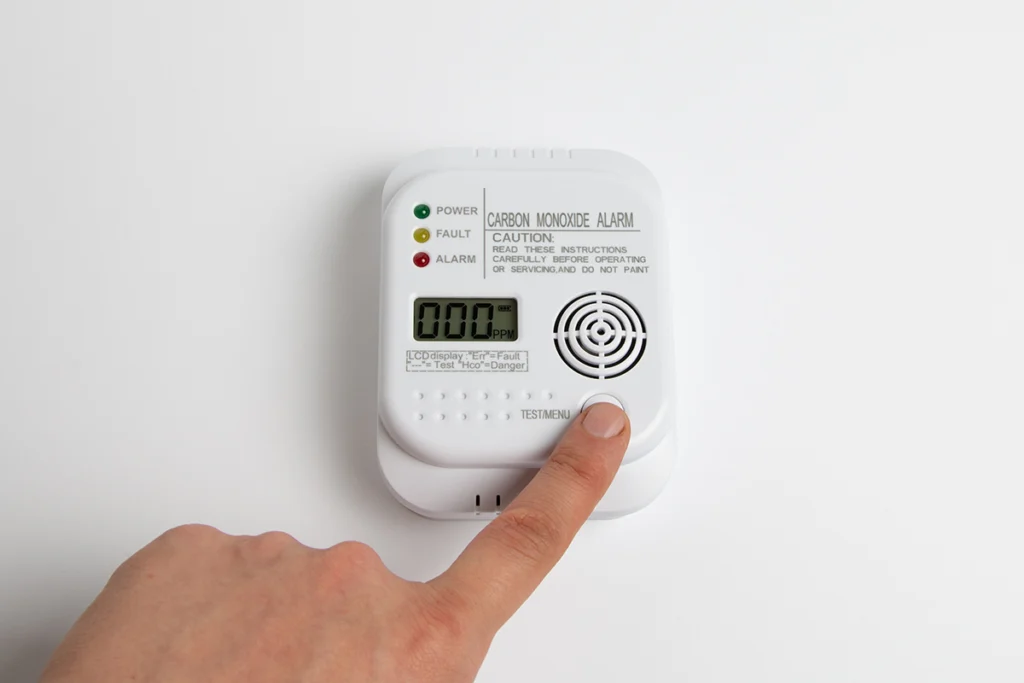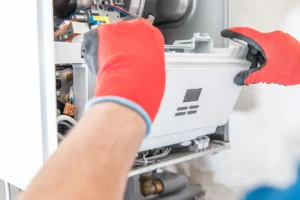If you’ve ever been jolted awake in the middle of the night by that sharp beep… pause… beep, you know how unsettling it feels. A carbon monoxide detector beeping isn’t something to take lightly—or to wave a towel at like you might do with a smoke detector. It’s your home’s way of warning you that something may be wrong. At Sub Zero Temp Control, we’ve answered many calls that start with the same concern: “My carbon monoxide detector keeps beeping—what should I do?” Let’s break down what those beeps mean, what to do next, and how to stay safe.
What Carbon Monoxide Actually Is
Before we talk about the alarm, it helps to understand the danger. Carbon monoxide (CO) is an invisible, odorless gas created when fuels like gas, oil, or wood don’t burn completely. Because you can’t see or smell it, the first sign of trouble often is the beeping detector. If you’ve ever wondered what carbon monoxide smells like or how to tell when it’s present, the truth is—you can’t rely on your senses alone. That’s exactly why these detectors are so vital.
According to the Centers for Disease Control and Prevention (CDC), hundreds of people die every year from accidental carbon monoxide poisoning. It’s one of those hidden household dangers that’s easy to overlook until it becomes serious.
Why Is My Carbon Monoxide Detector Beeping?
There’s a difference between a carbon monoxide detector beeping due to danger and one that’s just trying to get your attention for maintenance. Understanding which is which can literally save your life.
Consistent, repeating beeps: This usually means CO is present. Leave your home immediately, get fresh air, and call emergency services.
Intermittent chirps every 30–60 seconds: That’s often a low battery or an end-of-life warning. Most detectors only last 5–7 years.
Erratic or random chirps: Could be a loose connection, dust buildup, or humidity interfering with sensors.
(And yes, I’ve seen homeowners tape over their alarms just to stop the sound—please don’t. You’re only silencing the warning, not the danger.)
What To Do When Your Carbon Monoxide Detector Is Beeping
If your carbon monoxide detector beeping pattern indicates danger, follow these steps immediately:
Get everyone outside. Don’t waste time investigating. Open doors and windows on your way out.
Call 911. Let the professionals check CO levels before you go back inside.
Have your HVAC and appliances inspected. Furnaces, water heaters, and stoves are common CO sources when they’re not venting properly.
Once everything’s clear, contact a licensed HVAC technician. At Sub Zero Temp Control, we inspect your heating and ventilation system to ensure it’s burning cleanly and exhausting gases safely. If your carbon monoxide detector beeping turns out to be caused by a venting or combustion issue, our heating repair service covers full diagnostics, system testing, and safe, reliable fixes.
Common Causes Behind Carbon Monoxide Leaks
A carbon monoxide detector beeping alert often points to a few specific problems inside your home’s heating system. One of the most common? A cracked or blocked furnace heat exchanger. When this critical component fails, it can allow combustion gases to leak into your home’s airflow. Other frequent culprits include clogged chimney flues, poorly vented water heaters, and damaged exhaust pipes.
Any system that burns fuel needs oxygen and proper ventilation. Without them, incomplete combustion creates CO, which can quickly accumulate indoors—especially in newer, tightly sealed homes built for energy efficiency.
For a deeper technical look, the U.S. Environmental Protection Agency (EPA) provides detailed guidance on how carbon monoxide forms and how to prevent exposure in your home. It covers key safety practices for combustion appliances, ventilation, and detector placement—all of which help reduce the risk of leaks and false alarms.
How To Prevent Future CO Alarms
Once you’ve dealt with a carbon monoxide detector going off, prevention becomes your best defense.
Test detectors monthly. Press the button until you hear a beep.
Replace batteries twice a year. (I usually tell homeowners to swap them when changing clocks for daylight saving time.)
Install detectors on every level. Keep one near each sleeping area.
Schedule annual HVAC maintenance. Technicians can spot venting issues before they become dangerous.
At Sub Zero Temp Control, we also recommend pairing regular HVAC tune-ups with combustion safety checks. These simple inspections ensure your furnace, water heater, and even your gas fireplace burn efficiently and safely year-round.
Replacing an Old Carbon Monoxide Detector
Even if your alarm isn’t chirping, check its manufacturing date. Most detectors expire within seven years, and old sensors lose accuracy over time. If your carbon monoxide detector beeping signal keeps repeating even after battery replacement, it might simply be time for a new one.
You can find certified detectors at most hardware stores—just look for the UL (Underwriters Laboratories) mark to ensure it meets safety standards.
Why Professional HVAC Inspections Matter
A lot of homeowners assume carbon monoxide problems only come from old furnaces—but we’ve seen brand-new systems leak, too. Improper installation, disconnected exhaust pipes, or even a small crack in the heat exchanger can cause issues. Having a professional HVAC technician inspect and test your system ensures your equipment runs safely and efficiently.
Final Thoughts: Don’t Ignore That Carbon Monoxide Detector Beeping
When you hear your carbon monoxide detector beeping, don’t guess—act. Whether it’s a real emergency or a maintenance alert, that sound is there for a reason. Make sure your detectors are up to date, batteries are fresh, and your HVAC system is serviced regularly.
If you’re unsure where that CO might be coming from, Sub Zero Temp Control can help you find out safely. Our certified HVAC technicians are trained to test, inspect, and repair systems to keep your home’s air clean and your family protected.
Contact Sub Zero Temp Control today to schedule a full system inspection or routine maintenance.
Frequently Asked Questions About Carbon Monoxide Detectors
If you’ve still got questions after dealing with a carbon monoxide alarm, you’re not alone. Here are a few of the most common ones we hear from homeowners:
Most models last about 5–7 years. Check the back of the unit for the manufacture date and replace it before it expires.
Yes. A short chirp every 30–60 seconds often means the battery is dying. Replace it immediately, and if the beeping continues, check if the device has reached its end of life.
Place one on every level of your home, especially near sleeping areas and any fuel-burning appliances. Avoid corners and spots near windows or vents, since airflow can affect readings.How often should I replace my carbon monoxide detector?
Can low batteries cause my carbon monoxide detector to beep?
Where should I install my carbon monoxide detector?






